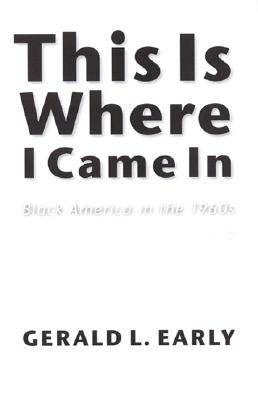This Is Where I Came In: Black America in the 1960s
by Gerald L. Early
University of Nebraska Press (Oct 01, 2003)
Nonfiction, Hardcover, 144 pages
More Info ▶
Description of This Is Where I Came In: Black America in the 1960s by Gerald L. Early
The fascinating and turbulent black America of the 1960s emerges in these essays, through the lenses of dissent and its contradictions. Gerald L. Early revisits this volatile time in American history, when class, culture, and race ignited conflagrations of bitterness and hatred across the nation. The lives of three active and influential people are given special attention: Cecil B. Moore, advocate and agitator in the “racial tinderbox” of black Philadelphia; Muhammad Ali, promoter of a “colored” consciousness; and Sammy Davis Jr., survivor of black vaudeville and liberator of black performers. The fiercely independent Moore, who rebuffed the black political establishment because it failed to address the concerns and needs of the majority of the black populace, used the authority of the NAACP to forge a militant, populist organization at the local level. Ali, one of the most widely recognized athletes of all time, combined protest and action to become a hero for black and “colored” people throughout the world, and became a type of ambassador to the Third World. Davis mirrored America’s emancipation, confusion, and self-destructiveness, and, most important, its self-consciousness, which transcended even his remarkable accomplishments as an entertainer. As Early demonstrates, the careers and lives of Moore, Ali, and Davis illustrate and embody the ambiguity and struggle of American identity in the 1960s.

Additional Book Information:
- ISBN: 9780803218239
- Imprint: University of Nebraska Press
- Publisher: University of Nebraska Press
- Parent Company: University of Nebraska
Books similiar to This Is Where I Came In: Black America in the 1960s may be found in the categories below:
- History / United States / 20th Century
- Literary Criticism / General
- Social Science / Cultural & Ethnic Studies / American / African American & Black Studies
